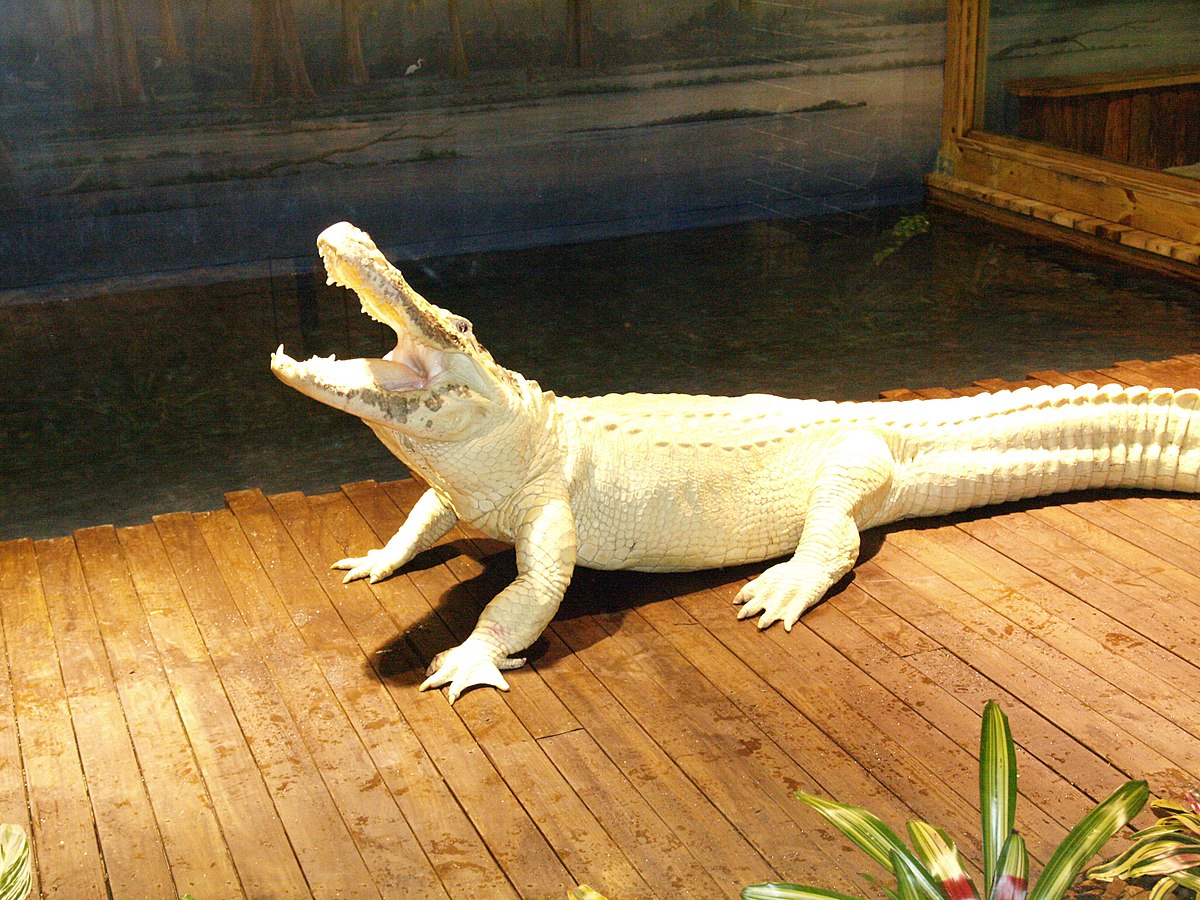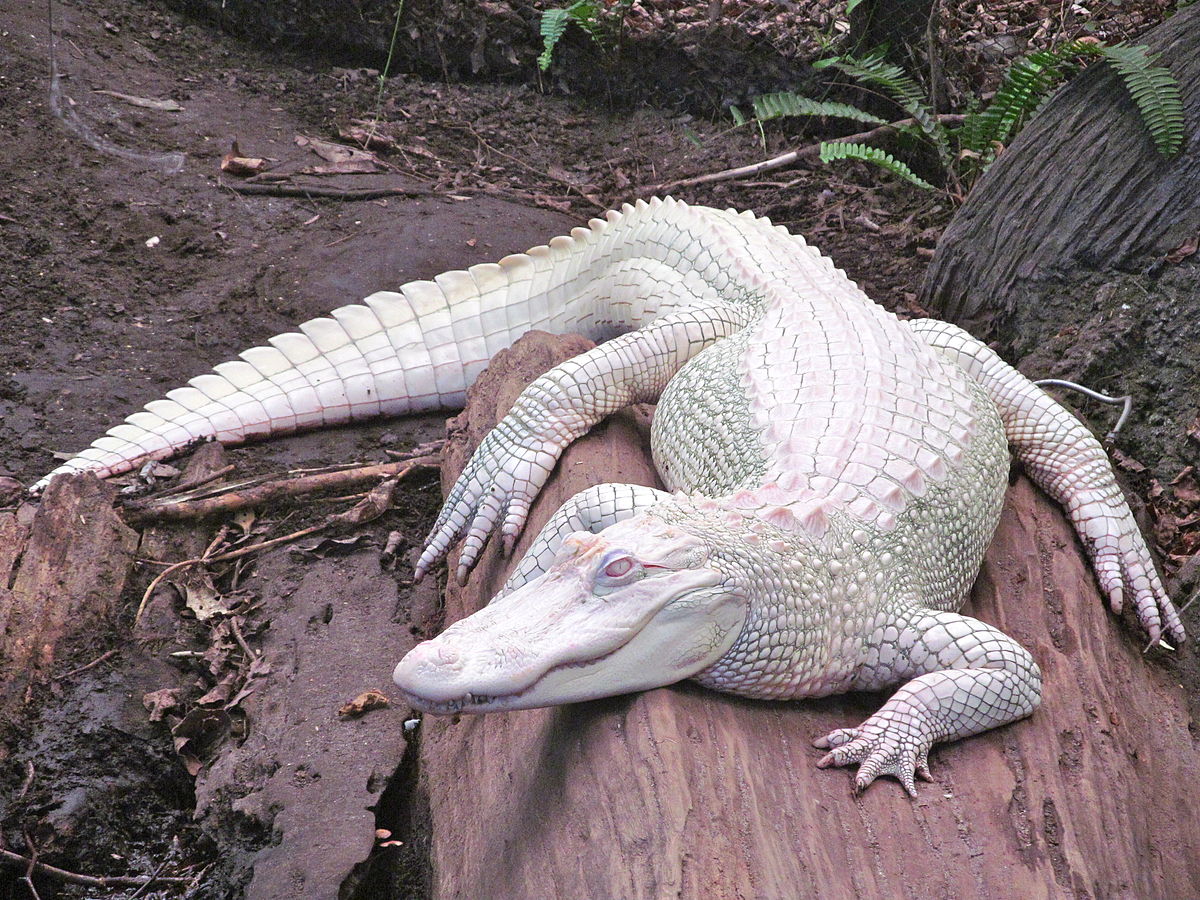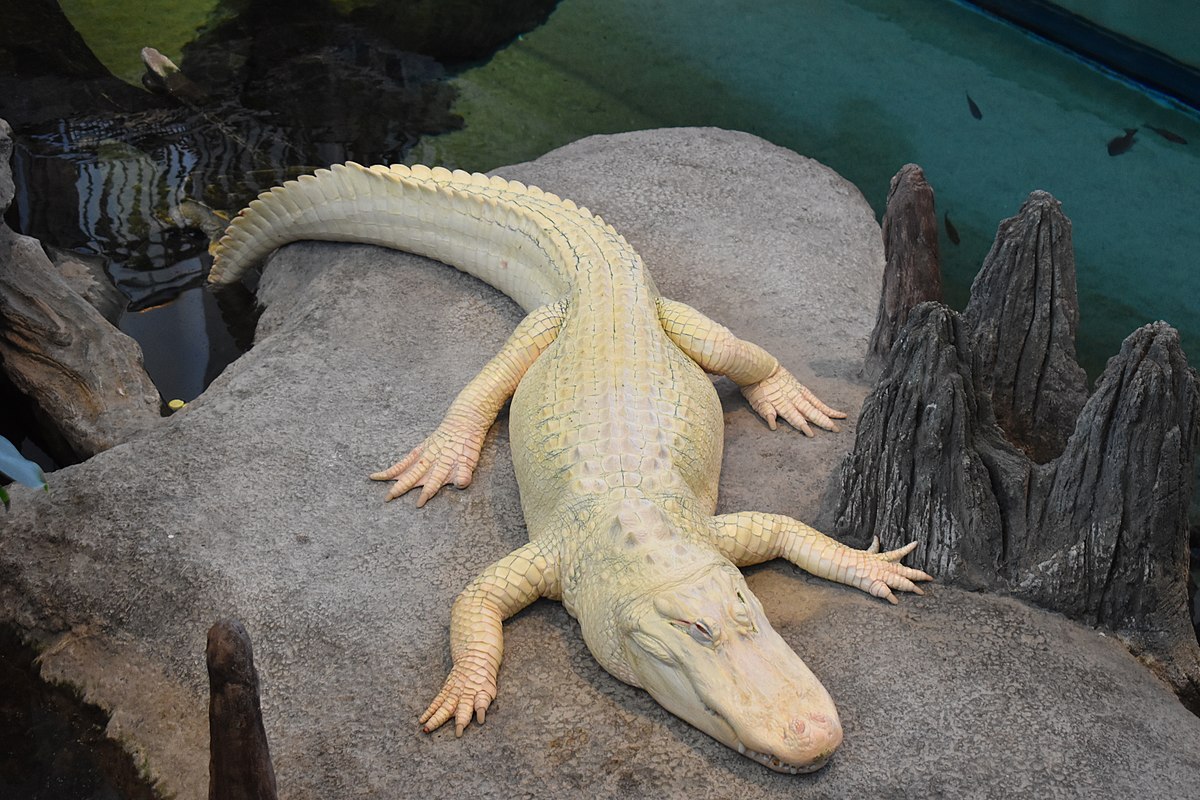Imagine stumbling upon a creature as rare as a white alligator. This fascinating species, native to the Southeast United States, captivates with their pale skin and mesmerizing blue eyes. Further discovery unveils their uniqueness – a result of a mutant gene that strips them of melanin, leaving an all-white scale cover, a stark contrast to their common relative.
Distinguishing Features of the White Alligator

The key difference between this wonder and its counterparts lies in its alluring skin tone. Female white alligators typically grow to a length of 10 feet, while their male counterparts often exceed 15 feet. A broad snout, flanked by an overlapping upper jaw over the lower one, adds to their captivating appearance. Add to this, their webbed feet and powerful tails make them proficient swimmers even with their chunky bodies.
They’re just as long-lived in captivity as any other alligator, boasting an impressive lifespan of up to half a century. However, in the wild, their pale skin makes them easy prey, potentially shortening their lifespan.
Intriguing Dietary Habits of the White Alligator

The diet of this pale gator varies with age. Young ones munch on insects, fish, crustaceans, worms, and snails. As they grow, their menu expands to larger prey – reptiles, birds, turtles, and an occasional antelope. Elusive and mesmerizing as they are, a ravenous white alligator isn’t averse to carrion as an alternative meal. While it is exceedingly rare for them to consider humans as food, it isn’t unheard of – mainly when they feel threatened.
A Look into their Reproduction
White alligators find their mates in spring, luring them in with their deep, resonating bellows. A single coupling results in multiple eggs, which the female alligator carefully tucks away in a cozy nest made of vegetation. Following an incubation period of around 65 days, these fierce mothers transport the younglings, averaging around 8 to 9 inches in length, to the safety of the water. For up to two years, the juveniles remain under her vigilant care.
Engaging Behavior of White Alligators

The white alligator is a slow metabolic creature with a penchant for short, accelerated bursts of speed. Big or small, it won’t miss a chance to snatch a potential meal. Larger prey often meet an underwater end as the white alligator demonstrates the infamous death roll, tearing apart their meal into manageable pieces. Should you stumble upon one, it would likely scamper off on your approach unless you present a threat.
According to Cajun lore, making eye contact with a white alligator might not be such a bad idea. Legend has it that such an encounter ensures a long, fortunate life! If you’d like a first-hand experience, you might want to consider a visit to Louisiana’s zoo, where they thrive under expert care.
For more intriguing insights about these all-white wonders, keep a lookout for our upcoming posts on interesting animals!